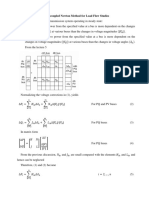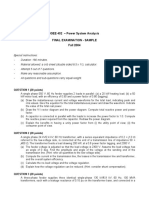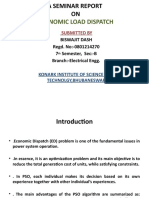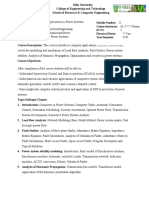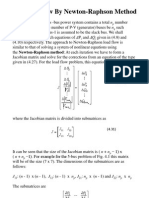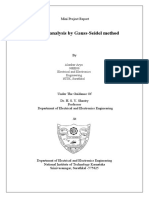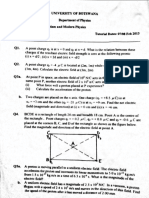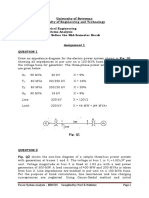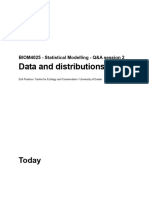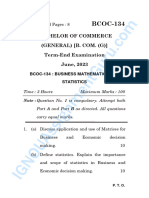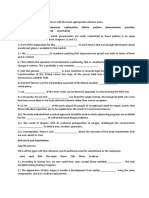100% found this document useful (1 vote)
797 views29 pagesPower Flow Analysis Guide
Load flow studies are important for power system planning and operation. They involve solving nonlinear equations to determine the voltage magnitude and phase angle at each bus given the real and reactive power injections. The Gauss-Seidel method is commonly used to solve the power flow equations iteratively by updating the bus voltages until the changes between iterations are small. In this example, the Gauss-Seidel method was used to calculate the voltages at two load buses within 0.0004 pu accuracy in an iterative process using the given system data.
Uploaded by
Snr Berel ShepherdCopyright
© © All Rights Reserved
We take content rights seriously. If you suspect this is your content, claim it here.
Available Formats
Download as PDF, TXT or read online on Scribd
100% found this document useful (1 vote)
797 views29 pagesPower Flow Analysis Guide
Load flow studies are important for power system planning and operation. They involve solving nonlinear equations to determine the voltage magnitude and phase angle at each bus given the real and reactive power injections. The Gauss-Seidel method is commonly used to solve the power flow equations iteratively by updating the bus voltages until the changes between iterations are small. In this example, the Gauss-Seidel method was used to calculate the voltages at two load buses within 0.0004 pu accuracy in an iterative process using the given system data.
Uploaded by
Snr Berel ShepherdCopyright
© © All Rights Reserved
We take content rights seriously. If you suspect this is your content, claim it here.
Available Formats
Download as PDF, TXT or read online on Scribd
/ 29






